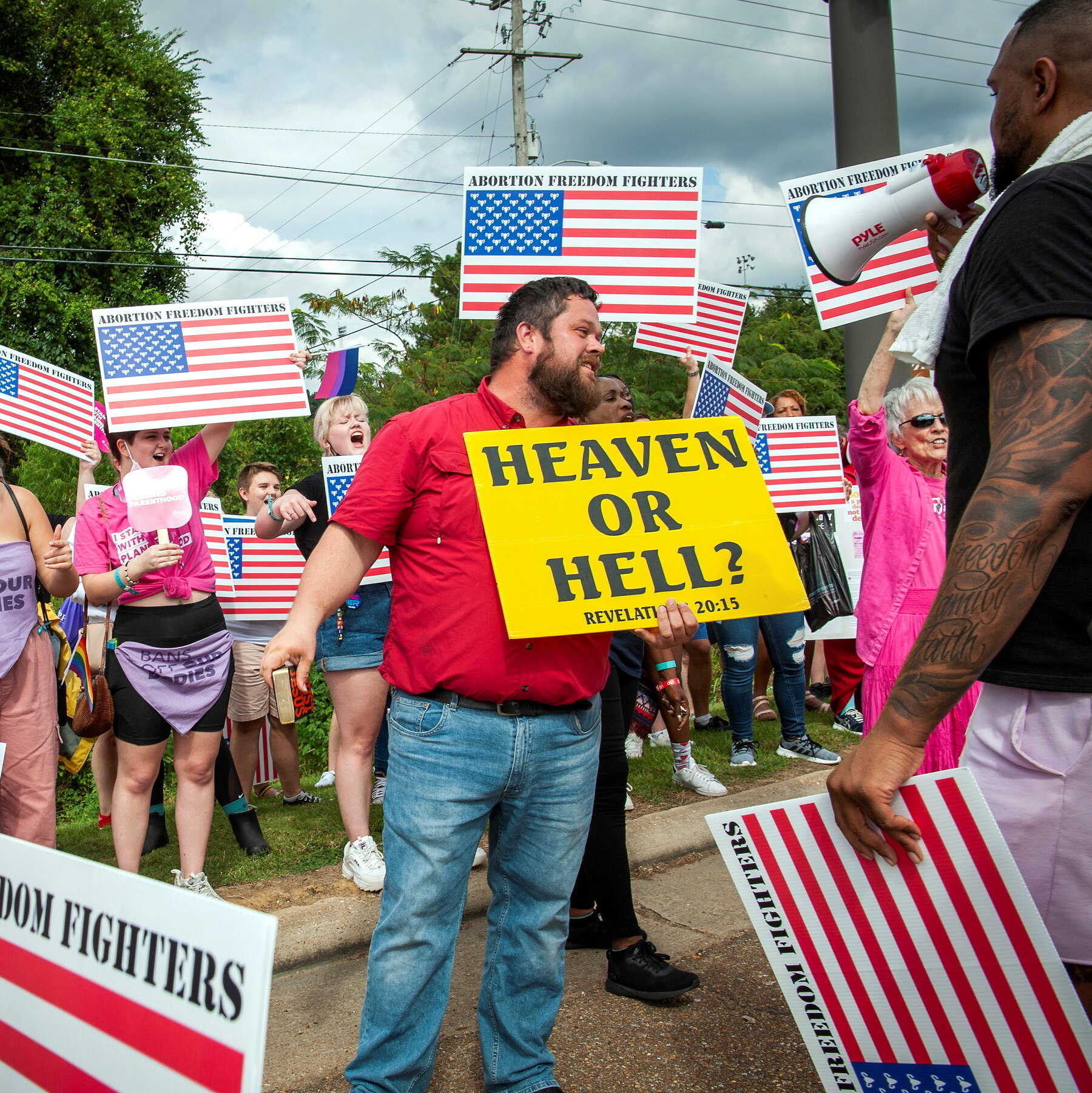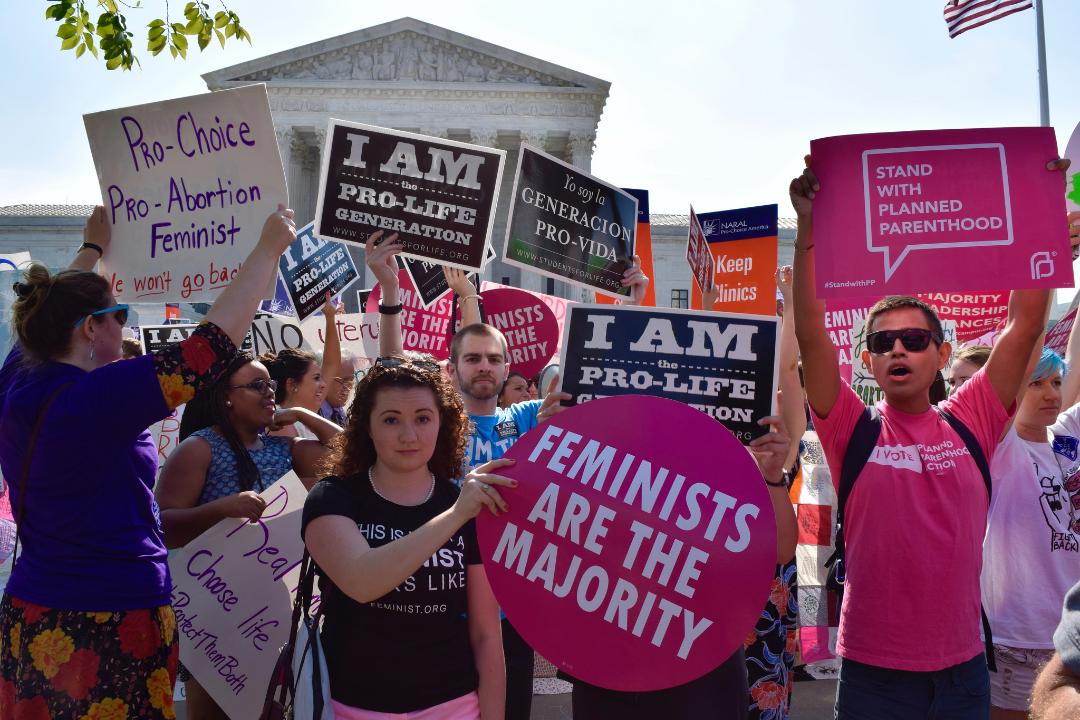In 1973, the U.S. Supreme Court ruled on a landmark case officially named Roe v. Wade. At that time, the court’s decision allowed women to have control over their bodies and reproductive choices by giving women the constitutional right to terminate a risky or unwanted pregnancy without excessive government restriction.
However, women’s reproductive rights are once again in the hands of the Supreme Court with the current case of “Dobbs v. Jackson Women’s Health Center,” which is a Mississippi abortion law being examined by the Supreme Court. The Mississippi Law, which is a direct threat to Roe v. Wade, makes abortions illegal after 15 weeks—which is about two months earlier than Roe permits. The idea behind this law is to ban abortions before a fetus becomes “viable” which is currently defined as 24 weeks.This is particularly concerning, because according to data from the CDC, a majority of abortions happen at 15 weeks or after. This state law was originally enacted in 2018 by the Republican legislature in Mississippi. Since the state law is a legal challenge to Roe v. Wade, it was blocked by a federal appellate court. Other Republican controlled states have passed similar legislation only to have those laws struck down in appeals court because they conflict with constitutional law.
A New York Times article suggests that the basis of the Mississippi Law argument is to ban abortions if, “the probable gestational age of the unborn human is determined to be more than 15 weeks….” The state law argues that the fetus has made important physiological developments by 15 weeks, and that abortions are riskier to the mother at this stage of pregnancy. (Liptak,2021)
Abortions would only be allowed in medical emergencies or cases of sever fetal abnormalities, excluding instances of rape or incest.
Although the Supreme Court will probably not rule on the case until June, the current 6-to-3 conservative majority dominating the Supreme Court is troubling. Due to Donald Trump appointing known anti-abortion justicies like Brett Kavanaugh and Amy Coney Barrett during his presidency—the once far-fetched idea of Roe v. Wade ever being overturned and putting established reproductive rights in jeopardy suddenly seems like it might become a reality. After decades of debate between pro-life versus pro-choice proponents, this one law could change abortion laws and access to reproductive care for the entire country.
If Roe is overturned, Republican-controlled states have “trigger” laws that would make abortion unlawful immediately, meaning that doctors could serve a life sentence, or have their medical license suspended if they provide a abortion to anyone. Banning abortions means banning abortion clinics, which provide other essential healthcare resources such as STD (Sexually transmitted disease) testing and treatment, birth control, well-women exams, cancer-screens and prevention, hormone therapy, infertility services and general health care.
Often, abortion may be the best option for many women and girls faced with an unplanned pregnancy. A woman may not be economically stable enough to raise a child; she may not be in a supportive/safe relationship; or she may not have the means and the time to give a child what he or she needs to survive and thrive.
Researchers suggests that the most common reasons women have abortions are:
-
Not financially prepared (Wanting a better life for her baby than she could provide)
-
Unplanned pregnancy(many women were not ready or a woman/girl was forced to have sex)
-
Partner-related reasons (the relationship is unhealthy, the women does not want to be a single mother, her partner is unsupportive, the partner doesn’t want the baby, or is abusive)
-
Need to focus on other children
-
Not emotionally or mentally prepared
-
Influence from family or friends
Access to resources should be an important concern to everyone because so many young women and girls are left vulnerable when it comes to being informed about the consequences of sex and/or unwanted preganncies. Plus, parents/guardians who do not talk about important topics involving women’s health and well-being, leave many girls and young women vulnerable to the internet, friends, or a partner informing them, which is often unreliable and dangerous. Many women are solely accountable when it comes to contracting an STD or becoming pregnant.
If American women no longer have access to safe, legal, abortions, they may be forced back into a scary reality of the dangerous alternatives that were tried many times before Roe v. Wade guaranteed access to proper medical supervision for abortion procedures. No one wants to return to the horror of self-induced abortions which had desperate women and girls using coat hangers, quack remedies, and even rat poison to induce miscarriage.
Of course there was also an illegal, unregulated, medical black market that women turned to if they had the right connections and enough money. Some women were able to find doctors, services, and providers that were willing to perform secret abortions safely but always at the risk of losing one’s career and/ or being imprisoned. One common underground service that was known during this time, was the Call Jane Collective, that provided women with free or low-cost abortions.
Fortunately, the biggest difference between the pre-Roe v. Wade era and today is that there are now other viable options, to terminate a pregnancy. In an interview with NPR, Karissa Hugeberf, assistant professor of history at Tulane University, emphasized, “ Well, among the differences are some of the technologies…there are concerted efforts to try to get abortion pills into states that are passing these criminal prohibitions on abortion.”(Kelly, 2019)
Historical precedents help us understand the potential results of Roe being overturned. As the number of abortion clinics are forced to dwindle, the scarcity or lack of their services puts more women in jeopardy. Furthermore, female citizens who are most likely already economically, emotionally, and socially stressed, are left to their own devices to figure out how to get the reproductive care and support they need.
In a Time magazine article, Shannon Brewer, the director of the last abortion clinic in Mississippi (the Jackson Women’s Health Center), detailed the struggle her abortion clinic faced trying to stay open these last few years against pressure from the new laws, plus harassment by anti-abortion activists. Brewer goes onto say that: “…[A]ctvists began to test the limits of Roe v. Wade, working closely with state lawmakers to pass new abortion restrictions such as mandated waiting periods or minimum measurements for clinics’ rooms and corridors…. It’s simply that the enforcement of these regulations would make it hard to keep clinics open,”(Abrams, 2021).
Overall, spanning various conservative states, there have been 106 anti-abortion laws, policies, and restrictions passed that led to new costs, paperwork, or staffing rules (Abrams,2021) which have forced a large number of abortion clinics out of business. This is on top of the many threats and scare tactics that anti-abortion activists use to keep both patients and clinic employees away from abortion clinics. Luckily, 13 states including the District of Columbia have laws to protect abortion rights even without Roe v. Wade.
Everyone has the right to their own religion and social beliefs. But by the same token, every woman should have the option to choose what is best for her physically, mentally, socially, and economically in terms of the possibility of raising a child. With this Supreme Court case there needs to be an active separation between Church and State—the same separation that is recorded in the Constitution as: “Congress shall make no law respecting an establishment of religion….”
To achieve a fair judgement, this case requires that the entire Supreme Court research and respect secular laws to reach an objective decision. Sadly, the Court’s current conservative majority may be swayed by their religious beliefs and values. As a society dealing with complex social issues we too often fail to realize that members of diverse dynamic populations have different realities and experiences. Our society does not have enough resources in place to support everyone’s needs. Many argue that unwanted babies can be given up for adoption or foster care, as if these were always perfect, painless solutions for all concerned. Ironically, it often seems that those arguing against abortion stop caring about all the fetuses they want to protect in utero as soon as these babies are born.
The Mississippi abortion law raises awareness about an issue that women fought so hard for— which is control over their own bodies. There is a stigma (often religiously motivated) placed on women and young girls about their bodies, sex and reproductive choices. Women and girls are often blamed and stigmatized for choosing to have sex, and they are compelled to bear almost all the most burdensome responsibilities for unwanted pregnancies. For men and women to live in equal freedom and dignity, the laws of the land should protect the rights of women and girls—including their choices about reproduction.

